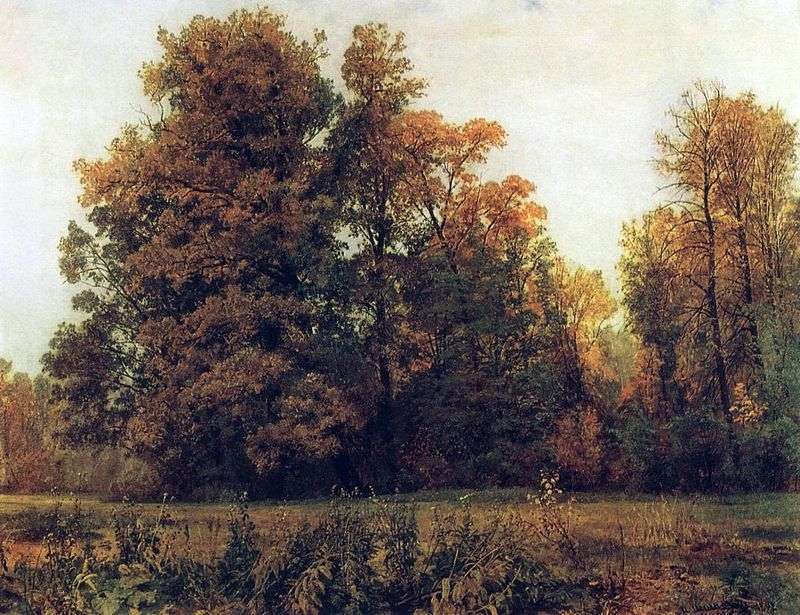
In the work “Autumn” Shishkin used a closed type of composition, for which it is characteristic to keep the viewer’s attention within a given limited space. The format of the picture is stretched in the vertical direction. The work is built classically correctly – the landscape is divided into three planes. At the same time, the first and second plans have been worked out in detail, and the far-off plans have been more generalized, which allows us to conclude that this work is an etude.
In the foreground there is a dry tree and two bushes, between which there is a clear rhythmic connection. The tree immediately attracts the attention of the viewer, and only after examining it, we translate the view to the second plan.
Trees, depicted in the background, play the role of the center of the composition, to which the lines of interaction of all elements of the picture are directed. They are depicted by the artist in sufficient detail and plastic. We can assume that these are maples, since it is these trees that tend to turn into gold in the first place with the advent of autumn.
A gray autumn sky opens behind the trees, due to which the golden color of the leaves seems even brighter. On both sides of the center of the composition there are still green trees that play the role of a kind of wings. In the distance one can see the silhouettes of other trees. That is, the whole composition of the picture is built on the principle of symmetry.
Shishkin very skillfully uses the air perspective – he depicts distant objects less clearly and in bluish-bluish tones. Although the artist himself claimed that he was not familiar with the laws of the future and draws on the flair, it can be confidently asserted that “Autumn” is a significant achievement of the master in plein air painting. The masterful use of aerial perspective creates a sense of depth. The image of a large piece of sky and trees creates a whole sense of epic and grandeur, typical of Shishkin’s paintings. Due to the image of trees, the artist creates the illusion of vertical movement.
Etude “Autumn” is also interesting because the image of this time of the year is rare in Shishkin’s work. In each of his work there is a subtle and deep understanding of the uniqueness of northern Russian nature. In a place with that for creation of art products the motive, close and clear to each simple person is chosen.
The artist worked in a realistic direction, but in the paintings there is a clearly expressed lyrical beginning. This is due to the fact that, despite the master’s desire to objectively represent the surrounding reality, the artistic images created on the canvas pass through the prism of his rich inner perception. Shishkin’s works are characterized by the presence of poetic and literary connotations. And in this he has much in common with other artists of the nineteenth century, which was recognized as the age of literature.
The main component, which is the charm of his works, is a keen interest in the world around him and his close study. The motivation for an objective image of the beauty of the surrounding nature laid the foundation for Shishkin’s poetic realism.
Working on the composition “Autumn”, the artist sought to uncover those features of nature that are close to him personally and at the same time were significant their objective meaning. It was in this approach that he saw the task of fine art and the opportunity to bring the cognitive element into creativity.
The study of this work Shishkin allows us to draw the following conclusions: In the first years of the second half of the nineteenth century, a new direction in art began to take shape – a realistic Russian landscape, characterized by an innovative approach and subtle artistry combined with a sense of direct contact with nature.
The development of a realistic trend in Russian painting aroused great interest among the progressive public, as it was during the period of the rise of cultural life in Russia. In addition, this current in art was inextricably linked with the epoch-making historical events of the time when the peasant question was in the first place for the entire creative intelligentsia.
In this difficult historical period, the determining role for Russian artists acquired the question of the content of their art. From the artists expected works that through art images reflect the mood of the oppressed class. It was in this decade that the Russian landscape painters most often chose for their paintings such motifs of nature in which the language of art could be told about folk sorrow – the autumnal season that is haunting melancholy with dirty, washed roads, a gloomy, weeping sky, rare coppices, half-ruined snow-covered villages. .. Landscapes of the time tried to depict the surrounding reality, not at all embellishing it. This approach was inherent in such famous masters as Shishkin, Savrasov, Kuindzhi, Polenov.
Skyshkin’s sketches are a whole world created with great difficulty and trembling love for the nature of his native land. Despite the fact that the master tried to convey what he saw in detail, his work does not look tedious, since they are made with love, which is transmitted in the process of viewing and the viewer.
Shishkin was destined to play a decisive role in the formation of Russian landscape painting. The basis of his rich talent was the artist’s extraordinary talent combined with a heightened sense of all life. Thanks to this paintings of the painter entered the spiritual life of several generations.
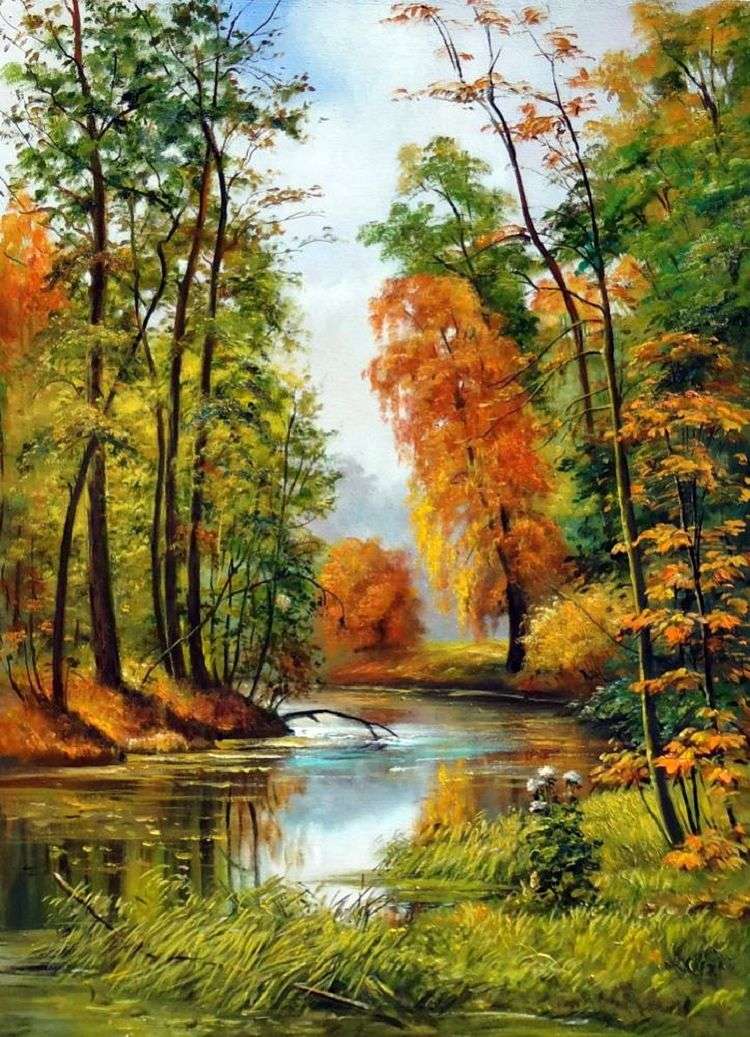 Autumn Landscape by Ivan Shishkin
Autumn Landscape by Ivan Shishkin Felling by Ivan Shishkin
Felling by Ivan Shishkin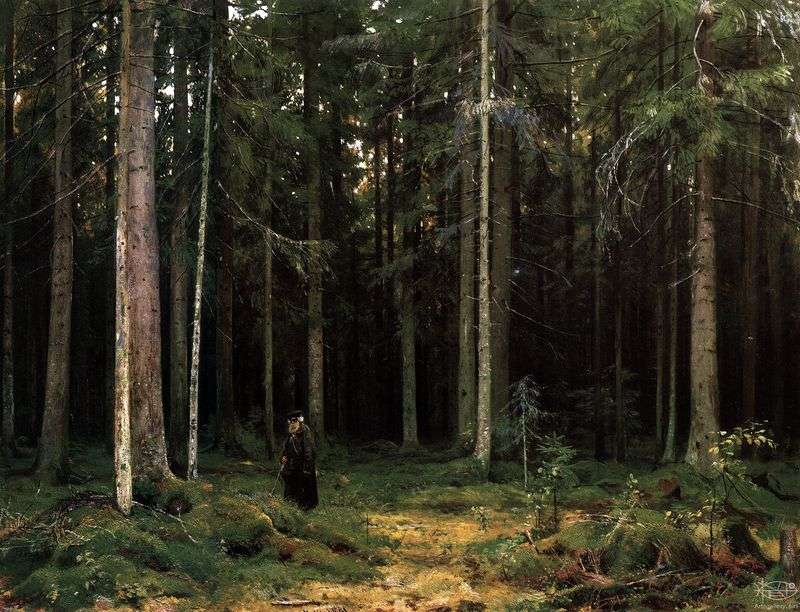 In the forest of Countess Mordvinova. Peterhof by Ivan Shishkin
In the forest of Countess Mordvinova. Peterhof by Ivan Shishkin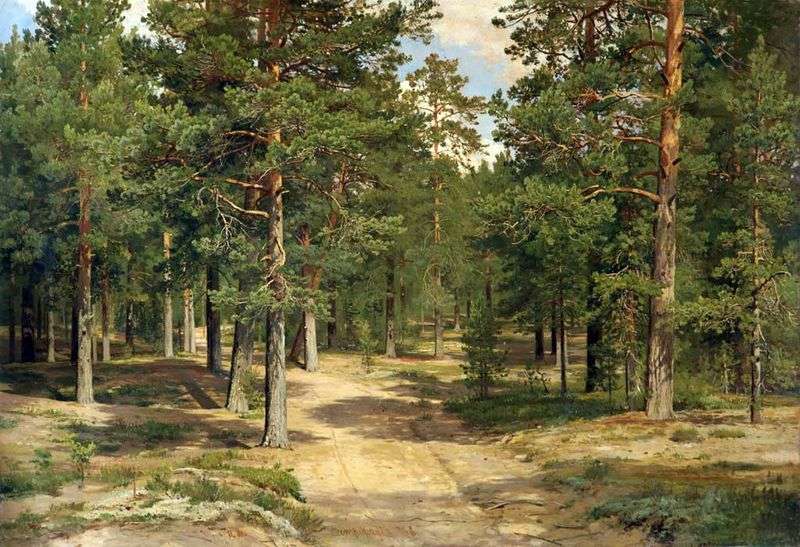 Sestroretsk Bor by Ivan Shishkin
Sestroretsk Bor by Ivan Shishkin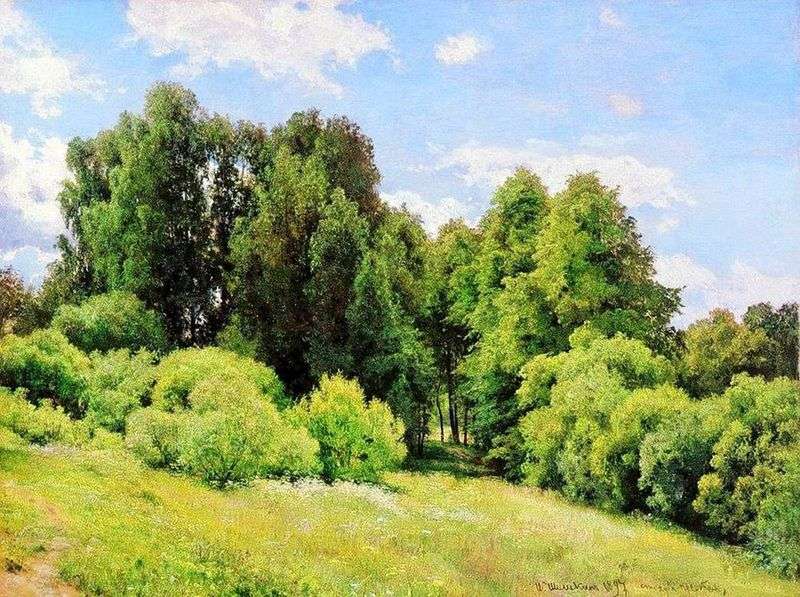 Forest glade (Polyanka) by Ivan Shishkin
Forest glade (Polyanka) by Ivan Shishkin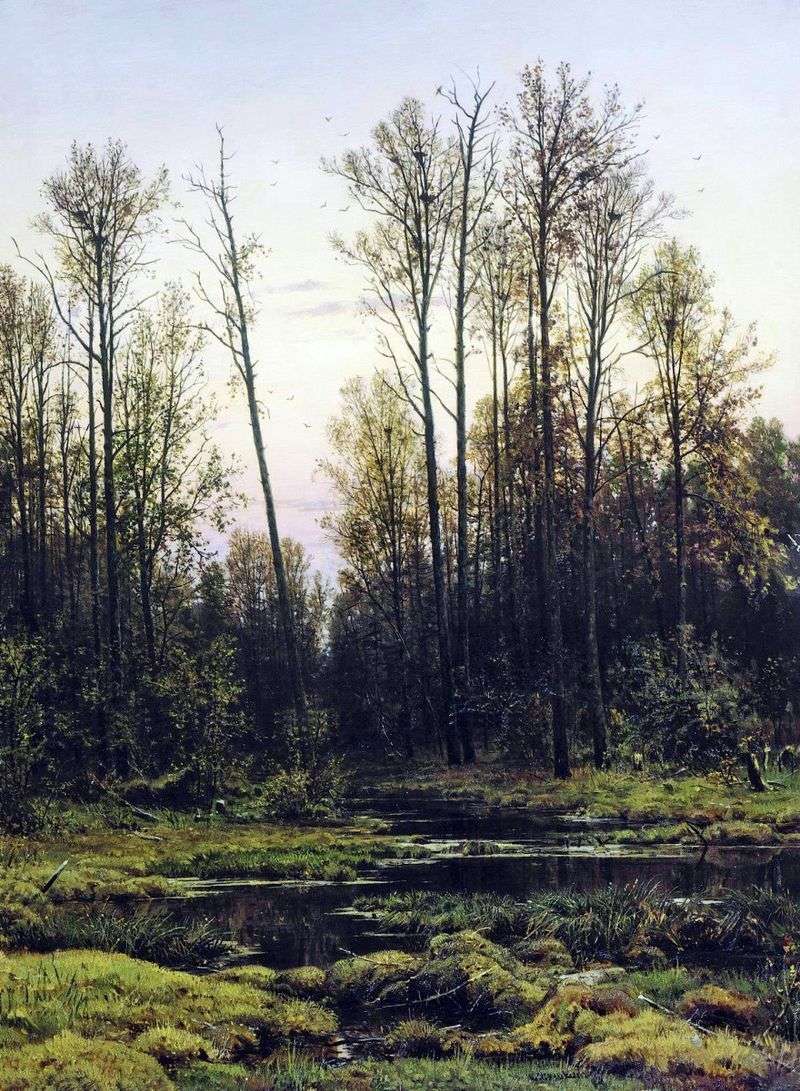 Forest in the spring by Ivan Shishkin
Forest in the spring by Ivan Shishkin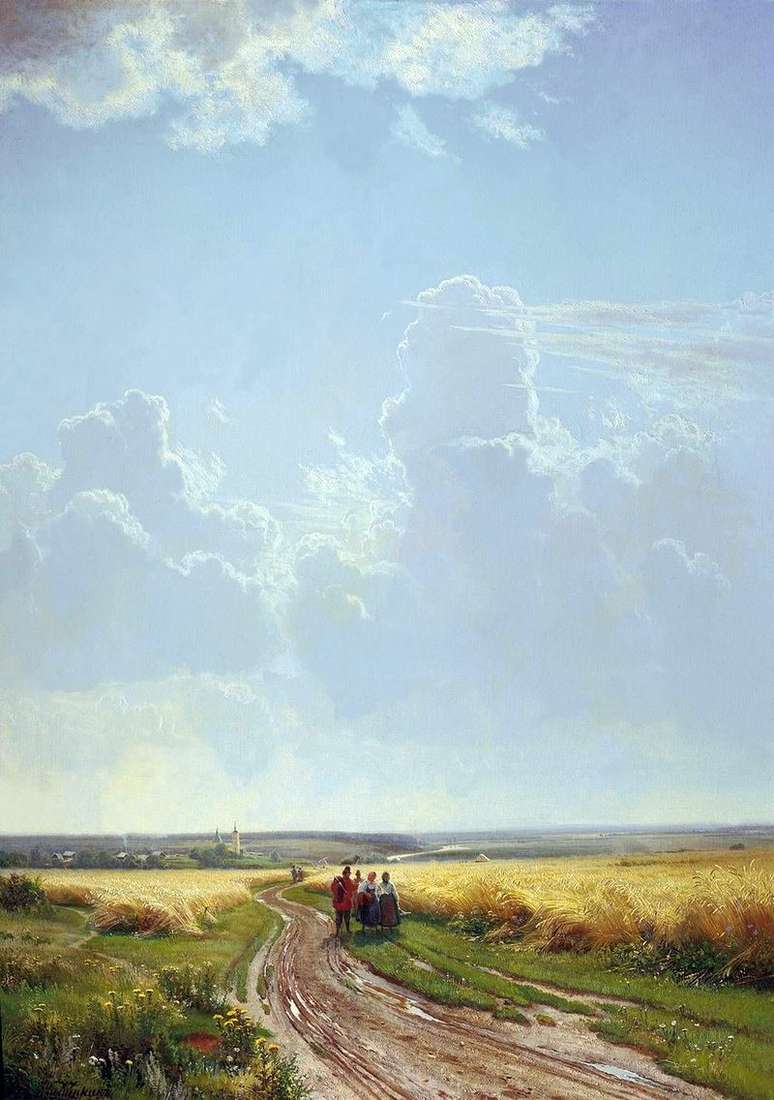 Noon. In the vicinity of Moscow by Ivan Shishkin
Noon. In the vicinity of Moscow by Ivan Shishkin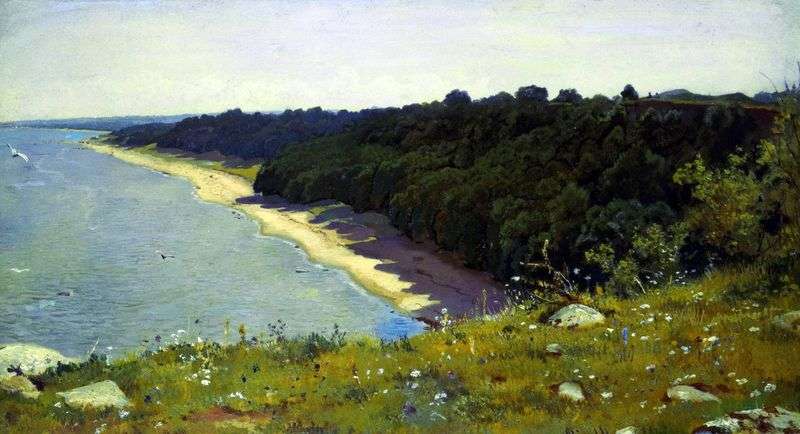 On the beach by Ivan Shishkin
On the beach by Ivan Shishkin